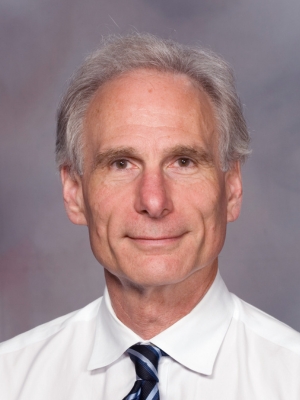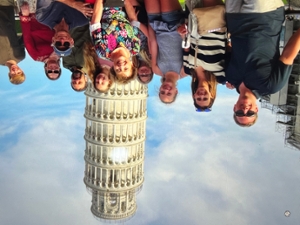Former Faculty Spotlight: Dr. Thomas Lohmeier

My Journey from California to Mississippi
My story begins in California where I grew up along with the Beach Boys, The Credence Clear Water Revival, Janis Joplin, and other luminaries. I received my PhD in physiology at the University of California, Davis. There I had the privilege of working with Thomas C. Lee, a recent disciple of William F. Ganong. At that time, Dr. Ganong was chair of physiology at UC San Francisco and a leader in neuroendocrine control of aldosterone and renin secretion. Dr. Ganong was also author of “Review of Medical Physiology,” a textbook widely used throughout the world but especially on the west coast. The collaborations between the Lee and Ganong laboratories had a formative influence on the design of my doctoral studies and the direction of experimentation throughout my research career. In addition, the veterinary school at UC Davis played an important role in the execution of my dissertation project. It was here that I developed the surgical skills required for conducting long-term survival studies in large animals, an achievement that also proved to be of great value in my future research at UMMC. Based on the above, the focus of my doctoral research was on neural control of renin secretion and the role of the renin-angiotensin system in renovascular hypertension.
Weekly seminars were part of the training program in the graduate program at UC Davis, often given by invited speakers. A particularly memorable lecture was given by a visiting professor of physiology from the South. His name was Arthur C. Guyton. After his seminar, I appreciated that he too was author of a popular medical physiology textbook, “Medical Physiology.” Impressed by his seminar and humble nature, I purchased his textbook and read many of the chapters. The chapters on the circulatory system were especially insightful. Rather than a disjointed qualitative description of the multiple components of the circulatory system, the presentation of a temporal, quantitative integration of these systems provided a clear, lucid understanding of their overall role in cardiovascular control. A unique aspect of this integration was based on a computer simulation of the human body, a novel experimental approach that was a curiosity to me.
After receiving my PhD in physiology, my wife Laura and I loaded a U haul trailer with all our worldly possessions (clothes, a TV and a sewing machine). With the trailer attached to the back of my 1969 Pontiac GTO (one of the true original muscle cars), we headed east to Columbia Missouri to begin 2 years of post-doctoral training in the physiology department at the University of Missouri. My studies here were under the mentorship of the department chair James O. Davis, a pioneer in aldosterone research. At the time of our arrival in Columbia, his laboratory had conducted seminal studies on renin secretion and had privileged access to newly synthesized blockers to the renin-angiotensin system for experimental investigation. During my postdoctoral training in Dr. Davis’ laboratory, I was fortunate to use these agents in my hypertension and heart failure research. At the end of my 2-year training period, Dr. Guyton came into the picture once again. Based on experimental studies and computer modeling, he was an advocate of the hypothesis that the most important effects of angiotensin in the control of fluid volumes and blood pressure were mediated by the actions of the peptide directly on the kidneys rather than indirectly through the generation of aldosterone. To this end, he was intrigued with the possibility of using angiotensin blockers in experimental studies for hypothesis testing. Being in the right place at the right time, I accepted an offer from Dr. Guyton for a postdoctoral position in his department. Parenterally, while I was busy in the laboratory at Mizzou, Laura taught fifth grade at a local grammar school and, only after a number of 360 spins, learned to control the GTO on the ice-covered streets of Columbia. While in Columbia, a notable event in our lives was the birth of the first of our 2 sons. Shortly after his birth, we loaded a U haul and relied on the GTO to get the 3 of us to Jackson, Mississippi. At that time, there were no Lohmeiers in Mississippi. Now there are 11 (see below).
I will not elaborate on my 39 years of research and activities at UMMC other than to say the focus of my research was on neurohormonal mechanisms in the control of blood pressure. For those interested, please see the first 2014-2015 departmental newsletter. This newsletter coincided with my retirement and includes a short synopsis of my contributions to the department However, a particularly salient point not made in this article was that my long-term hypertension and heart failure studies in chronically instrumented large animals could not have been conducted anywhere else in the world. The facilities for conducting these chronic studies were unique, unduplicated elsewhere, and generously supported by the department and the medical center. It is also relevant that many intellectual exchanges with our talented faculty were paramount to the success of these research studies. The witty banter with faculty, research personnel, and office staff, episodes too frequent to recount in this article, only added to the pleasure of my years on the faculty in this outstanding department. Many long-term friendships were made during my tenure as a faculty member.
After officially retiring as Professor from UMMC in 2014, my contributions to the department continued as Professor Emeritus. For the next 5 years, I relished escaping the 7-day a week rigor of overseeing chronic animal experimentation. A desk job was inviting. Having defended the major concepts of the departmental computer model of the circulation during exchanges with colleagues at national and international meetings, I felt it was time to better understand the inner workings of the model and the actual mathematical relationships as determinants of model predictions. Part of the impetus for becoming a late-entry modeler was to have a stronger basis for disputing published papers with fallacious arguments that purportedly discredited model predictions. Equally important, my hope was to use the computer model to explain several controversial hypotheses stemming from my experimental studies. Indeed, this is one of the most important aspects of the mathematical model: a means to evaluate hypotheses that are not readily testable experimentally. In collaboration with departmental Mathematical Modeling and Computer Simulation Core investigators, these objectives were achieved through publications in respected journals and presentations at national and international meetings.
After completing a collaborative review article with Dr. Hall for Circulation Research in 2019, I decided my time devoted to physiology was over and that more family time was needed. With a stiff upper lip, I turned in the key to my office never expecting to be involved in research activities again. This presumption ended last year. With the same enthusiasm expressed by Dr. Guyton when he recruited me to UMMC 40 years ago, a practicing cardiologist in Birmingham Alabama convinced me to collaborate with his team on a project to develop a medical device for treatment of resistant hypertension. With the promise of a limited time commitment, I reluctantly accepted. However, I must say, it’s been great to be back in the saddle again.
As a faculty member in the department, two notable perks standout. First, while countless evening hours and weekends were devoted to research activities, for the most part my schedule was flexible. During our sons’ elementary through high school education at Jackson Academy, I was able to attend virtually all of their activities. Their time at this school was only surpassed by the 27 years Laura taught second grade at this same institution. Additionally, a high point for me was the 13 years I was the coach of their soccer teams. A second major perk stemmed from the international scientists interested in my research. They provided Laura and me the opportunity to travel extensively throughout the world including 5 (Asia, North America, South America, Europe and Australia) of the 7 continents. During these trips, we met many delightful colleagues, discussed common research interests, learned more about their countries, and established lifelong friendships. When appropriate and possible, we included our grandchildren (and their parents of course) in our travels.
As a retiree, I spend an hour each morning sweating at a local healthplex. During workouts, I can monitor heart rate on my Garmin watch but not the simultaneous changes in mean circulatory filling pressure, venous return, cardiac output, and blood pressure that are crucial in allowing me to exercise. Nonetheless, I take solace in knowing that the changes in these cardiovascular variables can be displayed easily by simulations derived from the newest updated version of the Guyton computer model of the circulation. Retirement has also allowed more time for traveling, spending time with grandchildren, and reading for pleasure on topics other than physiology. Although the years of pain-free yard work have passed, this activity continues to be a passion, but now undertaken only after Advil therapy.
Below are two family pictures showing our sons and their families before and 5 years later (last Christmas) after the arrival of Thomas, our fifth grandchild.




